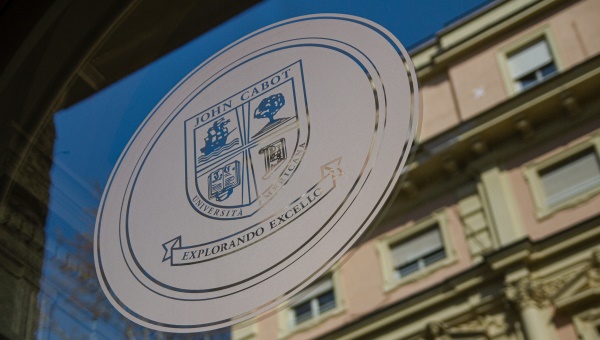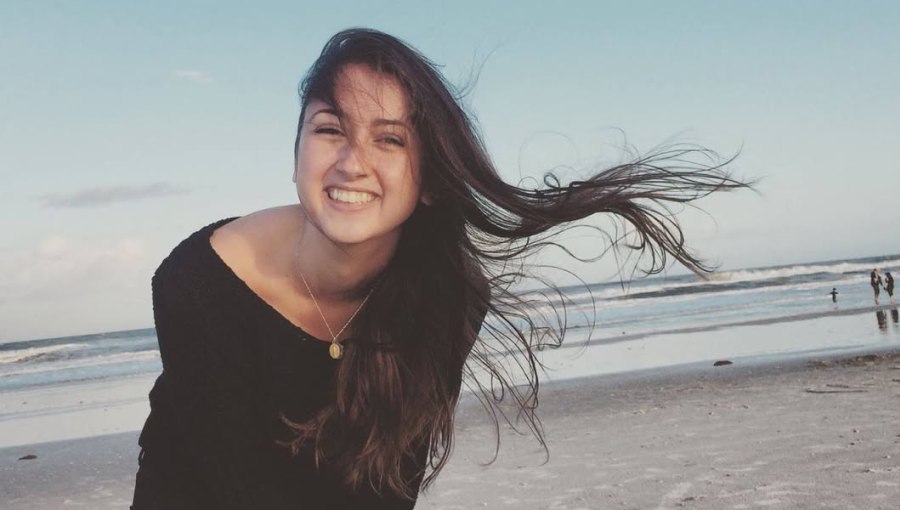Student and Artist Giggs Kgole Presents Exhibit "Ikhaya"
Giggs Kgole is a South African artist and a student in his final semester at JCU majoring in Art History with double minors in Art and Design and Communications. He has had over 25 exhibits since his first in 2019, including shows in the UK, South Africa, France, and Italy. He is one of the youngest art gallery owners in South Africa.
On March 7, Giggs presented his work at JCU in an exhibit entitled “Ikhaya.” Ikhaya is the Zulu word for ‘home,’ the central theme of the exhibit, alongside the themes of politics, poverty, gender, intimacy, and family.

Tell us more about your background.
I grew up in a village called Limpopo, in the northernmost province of South Africa, before moving to a small town called Kempton Park for elementary school. To go to high school, I needed a scholarship, and out of 3,000 students, I was one of 25 chosen to attend St. John’s College in Johannesburg. I found out about JCU from the College Board and was interested in it because it has students from around the world. I came to JCU for the first time in 2017, and after a year in Rome, I decided to take a year off to get back to work. Since then, I’ve been bouncing back and forth, with six months of school and six months of work.
How did you first become interested in art?
As a child, I spent time going down to the river to make figurines and toys out of clay. I was given a pencil for the first time in primary school and began drawing. When I was 10, I took my first art class and realized art is something people study and create. When I was 16, I studied in Scotland for a month and decided that I wanted to study abroad and become an artist. But the reality was that I was going to high school on a scholarship, and there were no scholarships at the time to go to university. I decided to take a gap year to go into the art industry and William Kentridge, one of South Africa’s top visual artists, interviewed me for an internship. Taking that position with him opened my world to the international art scene, and I realized it was my calling. I quit the internship after six months to produce my own work, which was the best decision I could have made. I was selected for an exhibition at the Pretoria Art Museum and grew as an artist in Johannesburg.
What is your artistic process?
The process revolves around storytelling. When I started, the goal was to tell untold African stories about the people I met in my village, but the longer I lived in cities, the more I realized that there are all sorts of stories to be told. I mostly focused on painting, but when I was 22, I did a residency in the south of France to learn ceramic making. It was a full circle moment to work with clay again, like when I was a child. I learned a lot from the people in that residency, but the most important advice was to trust myself and trust the process.
Has studying art history made you more well-rounded as an artist?
Absolutely. It’s important to understand the power of documenting and archiving knowledge about artists in different periods of time. It has allowed me to understand my role as a contemporary artist and the impact of my art in the future.
Who are some of your role models?
I have many mentors and role models, including other contemporary visual artists and artists who have passed away. One role model who has passed is the African American visual artist Jean-Michel Basquiat. Another is Gerard Sekoto, who was a South African artist who went to Paris for self-exile during apartheid. It makes me wonder about the difficulties he faced through his artistic life being so far from home. I feel like I have experienced a type of self-exile because I left home at age 13 and my country when I was 19. Because I had the privilege of being born in a free South Africa and got to go to a great high school and university, it makes me want to leave my mark on the world.
What are the current and future projects you have planned?
After I graduate in May 2024, I will have an exhibition in a gallery space in Capalbio, Tuscany. In June, I will be curating an exhibition in Johannesburg, and then go to the University of Cape Town to guest lecture and curate the works of 80 students. During my time in South Africa in June and July I’ll be working on some other projects with my gallery in Johannesburg. I’m planning to look at how I can inspire the youth in my country.
What are your long-term plans after graduating?
I have a long-term plan to build an art center in my village. Last year, I was able to acquire the land and this year I’m talking to architects to start the building process. It will be an international art center and artist residency space that allows for theater, music, art production, and craft making. The idea is for it to be a space to invite my international friends and people who want to research in a village environment, as well as a space for the local community. I realized that I can’t fly people from my village abroad for international shows, but I can bring my international world and shows to South Africa. International visual artists can learn about traditional crafts, art, and architecture from the village. This way, international artists can support the community while also gaining knowledge and spiritual enrichment. It’s a big project I’m hoping to have running in 10 years, but the first step of getting the land is done. Now we need to finalize the design, build the program, and start fundraising.
What advice would you give to students who are nervous about leaving their home country to study abroad?
Step out of your comfort zone, allow yourself to explore, and discover this world we live in. Studying at a place like John Cabot will unlock worldly perspectives and give you an international family. You can be on campus and be surrounded by people from all over the world. Take time to listen to new people and make friends. The advice I would give to any young person who’s about to have an adventure like this is to find a home within yourself. The moment you find the home within yourself, any environment you step into will be a welcoming and safe one.





